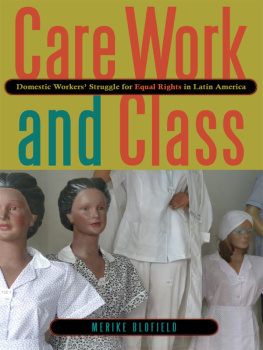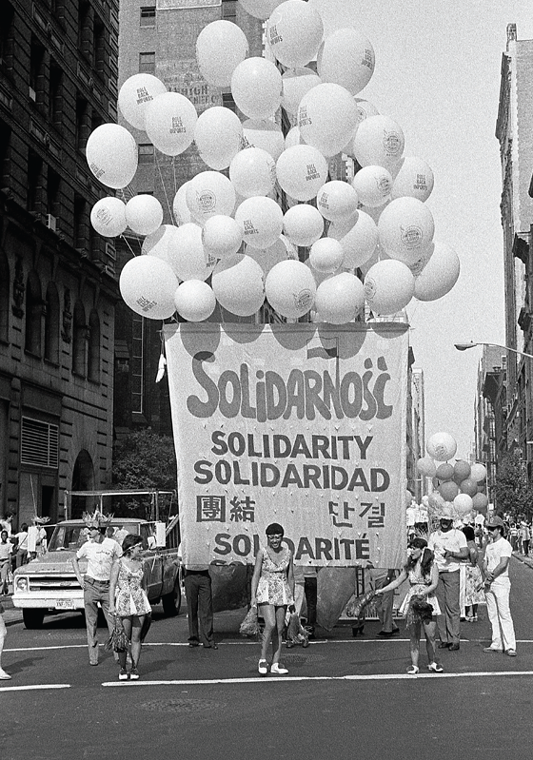Table of Contents
CITY OF WORKERS, CITY OF STRUGGLE
Columbia Studies in the History of U.S. Capitalism
Columbia Studies in the History of U.S. Capitalism
Series Editors: Devin Fergus, Louis Hyman, Bethany Moreton, and Julia Ott
Capitalism has served as an engine of growth, a source of inequality, and a catalyst for conflict in American history. While remaking our material world, capitalisms myriad forms have alteredand been shaped byour most fundamental experiences of race, gender, sexuality, nation, and citizenship. This series takes the full measure of the complexity and significance of capitalism, placing it squarely back at the center of the American experience. By drawing insight and inspiration from a range of disciplines and alloying novel methods of social and cultural analysis with the traditions of labor and business history, our authors take history from the bottom up all the way to the top.
Capital of Capital: Money, Banking, and Power in New York City, 17842012, by Steven H. Jaffe and Jessica Lautin
From Head Shops to Whole Foods: The Rise and Fall of Activist Entrepreneurs, by Joshua Clark Davis
Creditworthy: A History of Consumer Surveillance and Financial Identity in America, by Josh Lauer
American Capitalism: New Histories, by Sven Beckert and Christine Desan, editors
Buying Gay: How Physique Entrepreneurs Sparked a Movement, by David K. Johnson
Banking on Freedom: Black Women in U.S. Finance Before the New Deal, by Shennette Garrett-Scott
Threatening Property: Race, Class, and Campaigns to Legislate Jim Crow Neighborhoods, by Elizabeth A. Herbin-Triant
CITY OF WORKERS, CITY OF STRUGGLE
HOW LABOR MOVEMENTS CHANGED NEW YORK
EDITED BY JOSHUA B. FREEMAN
This volume is published as a companion to the exhibition City of Workers, City of Struggle: How Labor Movements Changed New York organized by and presented at the Museum of the City of New York May 1December 29, 2019.
This book and the exhibition it accompanies were made possible through the generous support of The Puffin Foundation, Ltd.
Additional support for this book was provided by Furthermore: a program of the J. M. Kaplan Fund, and other generous donors.
Book Design and Typography
Michael Gericke, Yeryung Ko and Alex Mkrinen, Pentagram
Copyright 2019 by Museum of the City of New York
All rights reserved
E-ISBN 978-0-231-19192-0
Columbia University Press
Publishers Since 1893
New York, Chichester, West Sussex
cup.columbia.edu
Library of Congress Cataloging-in-Publication Data
Names: Freeman, Joshua Benjamin, editor.
Title: City of Workers, City of Struggle: how labor movements changed New York / edited by Joshua B. Freeman.
Description: New York : Columbia University Press, [2019] | Series: Columbia studies in the history of U.S. capitalism | Includes bibliographical references.
Identifiers: LCCN 2018058068 | ISBN 9780231191920 (cloth : alk. paper)
Subjects: LCSH: Labor unionsNew York (State)New YorkHistory. | Labor--New York (State)New YorkHistory.
Classification: LCC HD6519.N5 C58 2019 | DDC 331.8809747/1dc23
LC record available at https://lccn.loc.gov/2018058068
ISBN 978-0-231-19192-0
A Columbia University Press E-book.
CUP would be pleased to hear about your reading experience with this e-book at .
Cover Images
Row 1 (top), left to right
Protest at the construction site of SUNY Downstate hospital, Brooklyn, 1963
Photograph by Bob Adelman; Estate of Bob Adelman
Construction workers protest union busting, New York City, 2018
Photograph by Michael Nigro; Michael Nigro/Pacific Press/Alamy Live News
Striking members of ILGWU Local 2325, New York City, 1982
Photograph courtesy Kheel Center, Cornell University
Row 2 (middle), right
Girl doing homework, New York City, 1924
Photograph by Lewis Wickes Hine; courtesy Library of Congress, Prints and Photographs Division
Row 3 (middle), left to right
Protest against child labor, New York City, 1909
Photograph courtesy Library of Congress, Prints and Photographs Division
Protest at Mt. Sinai Hospital, New York City, 1959
Photograph courtesy Center for Puerto Rican Studies, Hunter College, CUNY
Row 4 (bottom), left to right
Protest at the construction site of SUNY Downstate hospital, Brooklyn, 1963
Photograph by Bob Adelman; Estate of Bob Adelman
Bhairavi Desai, director of the Taxi Workers Alliance, 2012
Photograph by Bryan Smith; Bryan Smith/ZUMAPRESS.com/Alamy Stock Photo
TWU president Michael J. Quill, 1946
Photograph by Leroy Jakob; NY Daily News Archive via Getty Images
TABLE OF CONTENTS
Whitney W. Donhauser
by Sarah M. Henry & Steven H. Jaffe
by Simon Middleton
by Leslie M. Harris
by Johnathan Thayer
by Elizabeth Blackmar
by Joshua Brown
by Annelise Orleck
by LaShawn Harris
by Joshua B. Freeman
by Aldo A. Lauria-Santiago
by Martha Biondi
by William A. Herbert
by Kim Phillips-Fein
by Brian Greenberg
by Kenneth J. Guest & Margaret M. Chin
by Premilla Nadasen
by Ruth Milkman
by Joshua B. Freeman
ILGWU March on Broadway, 1983
Photograph by Walter Leporati
Whitney W. Donhauser
Ronay Menschel Director & President of the Museum of the City of New York
N ew York City is known as the nations finance capital, media capital, arts capitaleven as the capital of the world. But in important ways, it is also the capital of labor. New York was an incubator of the nations trading economy, its industrial economy, and its financial economy, and each of these was made possible by the brains, skills, and muscle of the citys working people. Here they incubated a variety of labor movements, from the first organizations of craftsmen in the era of the Revolution to the Workingmens Party of the 1820s, to the American Federation of Labor and the International Ladies Garment Workers Union, and on to the Household Technicians of America. The nations very first Labor Day was held in New York City on September 5, 1882, and today, well over a century later, new organizations like worker centers are re-defining workers movements yet again.




![Freeman - Pro design patterns in Swift: [learn how to apply classic design patterns to iOS app development using Swift]](/uploads/posts/book/201359/thumbs/freeman-pro-design-patterns-in-swift-learn-how.jpg)















